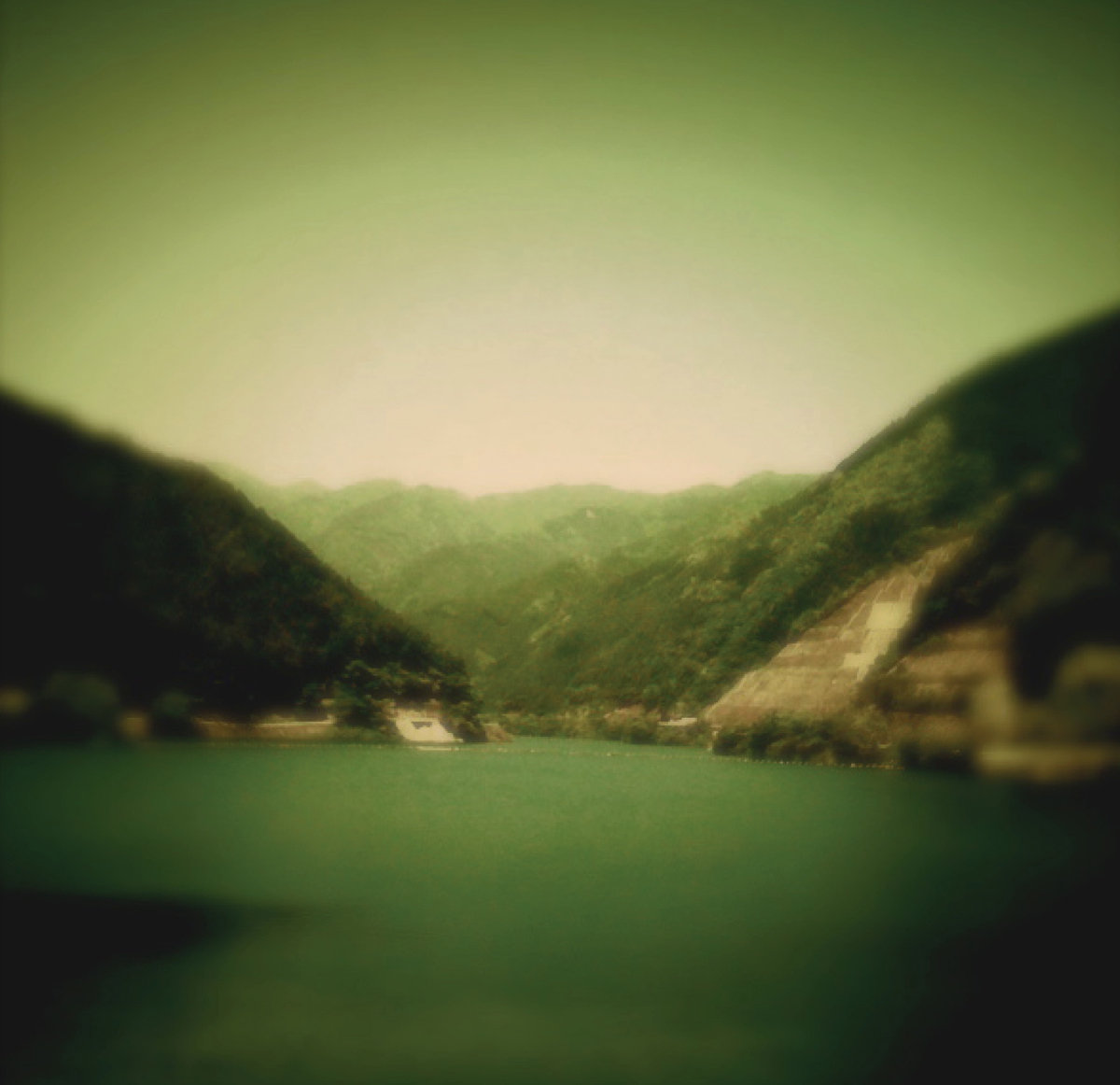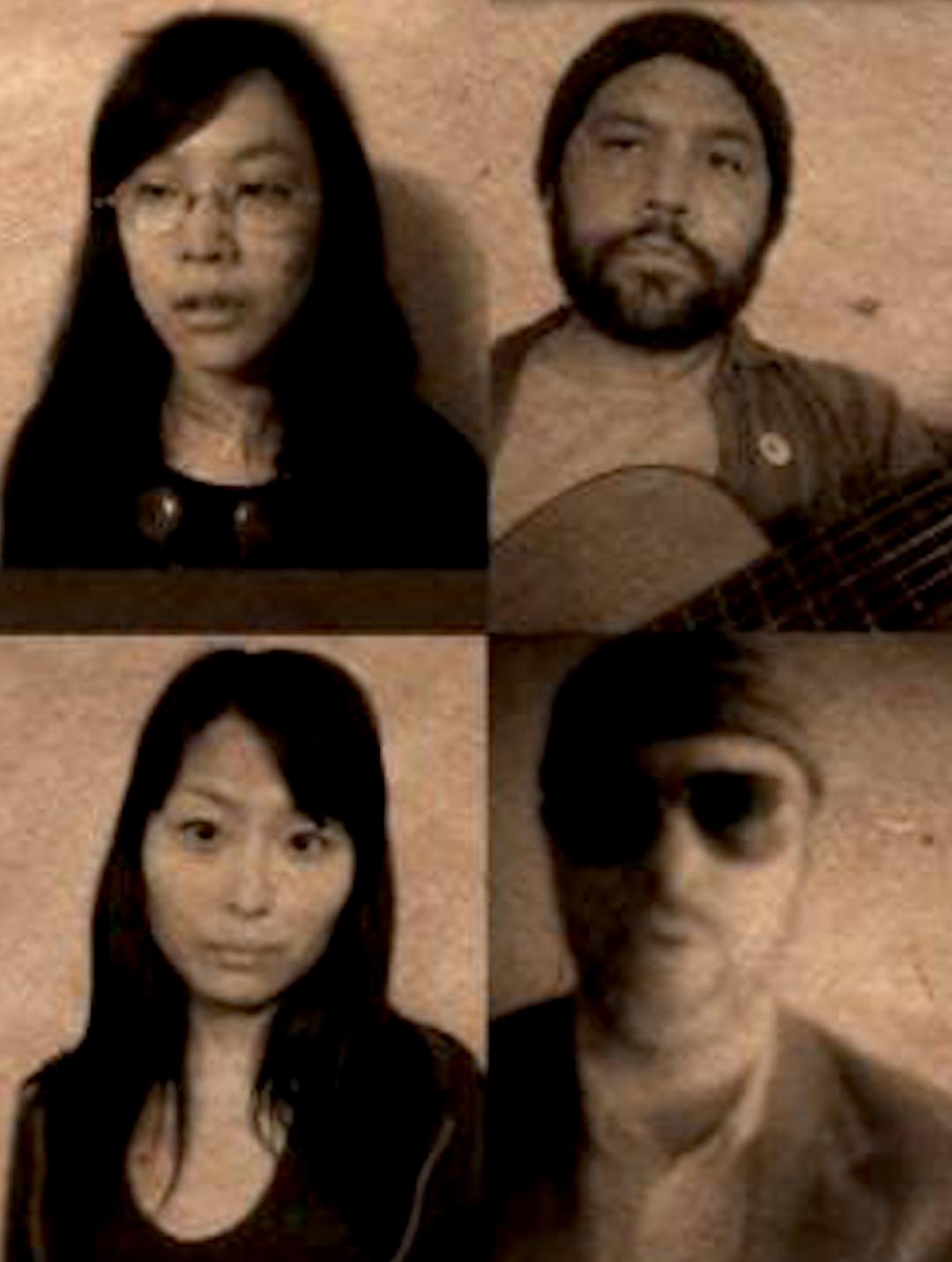Mountain Ocean Sun interview
Ten years ago, more or less, a collective called Mountain Ocean Sun released Peace Conference, a massive and unyielding album consisting of a single 64-minute drone. It’s like a moving painting or Foucault’s pendulum demonstrating the earth’s rotation—there is a propulsion in its deliberateness, a “let’s-see-this-through-to-its-end-ness,” and when the end does arrive, a cathartic afterglow hangs in the atmosphere.
Four solo recordings from four different musicians (“on a mountain, in the woods, near a river, a lake, and the city”) make up Peace Conference. Two of those musicians, Warren Defever (of His Name Is Alive) and Jean Cook (multi-instrumentalist extraordinaire) agreed to look back on the recording process.
Mountain Ocean Sun
Jean Cook – Violin, Viola, Shruti box
Daniel Littleton – Harmonium, Bells, Kubing
Hitoko Sakai – Harmonium, Shruti box
Warren Defever – Bells, Percussion, Gong
As you four began recording Peace Conference, did you share any specific intentions or a mission statement of some kind? Did you guide each other in any way?
Warren Defever: I first met Dan Littleton when I was producing Jenny Toomey for an album on 4AD in the mid 90s. Shortly afterward I started recording his main project, Ida, briefly touring with them as live sound engineer as well, although more often I found turning off the PA usually improved the experience for everyone in the room. We have spent hundreds of hours working together over the years in a wide variety of musical settings. Jean Cook’s classical training, sight reading, and improvisation skills allow her the freedom to tour and record with everyone from the Art Ensemble of Chicago to Jon Langford and I immediately asked her to join His Name is Alive after hearing her play. Since then we’ve collaborated on countless recording sessions and live performances. Hitoko Sakai was touring the US with Japanese noise band MSBR when we first met and after a few shows together in Europe and Japan we began working on a series of albums of field recordings and drone-based sounds. As a group, the four of us had done a few shows and decided we should try to get this vibe on tape. Dan lives in New York, Jean at the time lived in DC, and Hitoko and me were living together in Michigan so we decided to record our parts separately but simultaneously. We agreed on a time. Each member was responsible for recording sixty- four minutes, which, although I can’t say for sure what the significance is, I believe it was some sorta quasi-mystical mixed-up numerological reference to the recording date and time, 8.8.08.
Jean Cook: MOS is a drone band, and that sets a specific intention. For this recording we all recorded at the same moment, a summer night, for the same duration. I didn’t communicate with anyone during my recording session.
What are the logistics like for creating a solo drone recording that you know will be commingling eventually with three other solo drone recordings? In the moment-to-moment present of your own session, how concerned were you with how it would fit in with the others?
JC: There is a tremendous musical flexibility with drones because of the slow pace of movement. I didn’t think of what the others would be doing. There weren’t that many mysteries for me about the logistics or how it would fit together. It’s a drone record. We each make our statements and they come together and sometimes it matches up and sometimes it doesn’t and that’s the point.
WD: The album is primarily made up of sound. There are notes and occasionally harmonies but there is not a key feeling or a tempo, there is no time. The normal studio concerns of each band member needing a headphone mix to stay in time with the others did not apply here. The percussionist occasionally gets a pulse going but only briefly. To my ears it all blends together well, there is a lot of space. Each jammer left a lot of space for everyone. As producer my main concern was about the logistics of each track being recorded on completely different formats and how the relatively lo-fi cassettes that one member was using would fit with the bells and gongs I was recording digitally at the highest possible bit rate and sampling speed.
What is the predominant drone made of? I mean the first drone sound that begins Peace Conference, after the twinkling of bells. Is that the shruti box? Does it run for the entirety of the piece? If so, was it looped, or did Jean manipulate the box for the entirety of her recording? It fascinates me in its stoicism, its “A Man Said to the Universe”-esque incessancy. For a while, it has a subtly pummeling nature about it, but by the middle of the piece, it seems to have been transformed—maybe a shift in pitch? Maybe it arrives at a concordance or some kind? Tell me anything about this sound/instrument/layer.
JC: There are multiple shruti boxes and multiple harmoniums on the record. Sometimes they are playing at the same time and other times they are not. I disagree that there is a predominant drone. I definitely don’t hear that. Listening to the record I hear many drones coming in and out simultaneously, and over time.

WD: There isn’t one drone that continues through the whole piece. I hear harmonium at the start and it sounds like it’s quickly joined by a shruti box. For years I almost exclusively played in one key so it shouldn’t be surprising that without discussion everyone started on the same note. I can’t say for sure that nothing is looped, it all has a very organic, natural tone but Jean is really good at seamlessly moving from playing violin to loops of violin creeping in, all the while doing shruti with her foot and you’re never sure which sound is which. Hitoko’s harmonium usually has a deeper, fuller tone than the shruti box, if you were trying to break it all down, and Dan’s harmonium has more of an airy tone, he does more cloudy sounds, but I really don’t recommend trying to get too deep on this one, just let it go, let it all go.
What do you suppose is the ratio of a) instruments/objects played deliberately and b) ambient/incidental/natural sounds on Peace Conference?
JC: That’s such a deep question. What is deliberate and what is accidental in a drone recording? What is the role of the subconscious in composition? Those lines get blurred pretty fast for me.
The percussion work is hugely idiosyncratic on Peace Conference. It’s really fascinating. It isn’t quite a propulsive force moving the piece along, but there are spots where the ambient jangles coalesce into a shared groove. What is happening throughout those sixty-four minutes in terms of percussion?
WD: My part was recorded in a studio in Eastern Market in Detroit called The UFO Factory. It’s long gone now and there is a popular bar/restaurant with the same name in Corktown in Detroit. The UFO did shows on weekends, Low played there, tons of bands played but it was also more of an after-hours illegal bar than a recording studio. I spent a lot of time there. Everything was spray-painted silver, the piano was silver, one time I saw a cockroach that was halfway silver crawlin around. The paint fumes may have played a minor role in everything that happened there. You can hear me utilizing the entirety of the studio space and only a small part of the performance is near a microphone.
Can you discuss Peace Conference in terms of shape? Is it symmetrical? Smooth? Abrasive?
JC: Yes! Exactly.
WD: Having not listened to it almost ten years, when I hear it now everyone is playing so quiet, it’s a dream except for possibly my parts, I think I may have gone a little hard with some of the bells and the crashing into things in the back of the room. There are moments when it feels electronic and the tension builds and the stops on the harmonium that do a sort of tremolo are pulled out and there is one section that sounds kind of like an echoplex feeding back or looping but honestly not only did we go into this without a lot of pre-planning or discussion, we also never talked about it after. I can only guess what the heck is going on in there.
After a truly pleasantly searing blast for sixty-four minutes, Peace Conference comes to an end. That ending seems natural, unobtrusive—how did it come about? Does Peace Conference actually go on forever, and you just decided to snip it off for this release?
WD: We had agreed to record for sixty-four minutes so when I received the tracks from each member, one file was a slightly different length and as I listened to the pieces together it was clear their recorder was not operating at the proper speed, so I did shift the pitch and speed-to-match the others but it really does come together at some moments more than others. When it starts it’s a real creeper and then about a third of the way through gets pretty heavy. Jean builds up some strings for awhile and then it comes down hard at the end. Playing a completely improvised piece for an hour can be an exhausting experience but then also playing solo for an hour while imagining the other members’ parts guarantees there’s really nothing left at the end.

When Peace Conference is playing, I am compelled to listen in a genuinely attentive way—it’s too overpowering to work as some kind of “background music.” My dogs perk up when I put it on. Once, a human philistine even asked me to turn it off. Is there something magical going on here? Hypnotic? Any mysterious frequencies at work?
WD: The album resembles music in a lot of ways but ultimately is just sound. I think it sounds close to nature and doesn’t have a lot of the nonsense we typically associate with regular bands.
JC: I find it to be a complex record, but also simple. I enjoyed listening to it again. It’s funny to think about it having been ten years since it came out. It doesn’t feel like this record was meant for a fixed time or place. That kind of music often feels to me like we are tapping into something that’s always kind of there.
Warren and Jean are currently at work on another Mountain Ocean Sun release, so keep your ears pricked.
– Jeremy Noren
Peace Conference via Home Normal on Bandcamp
His Name Is Alive on Bandcamp
Also note: His Name Is Alive on AllMusic’s “2019 Favorite Compilations & Reissues”



